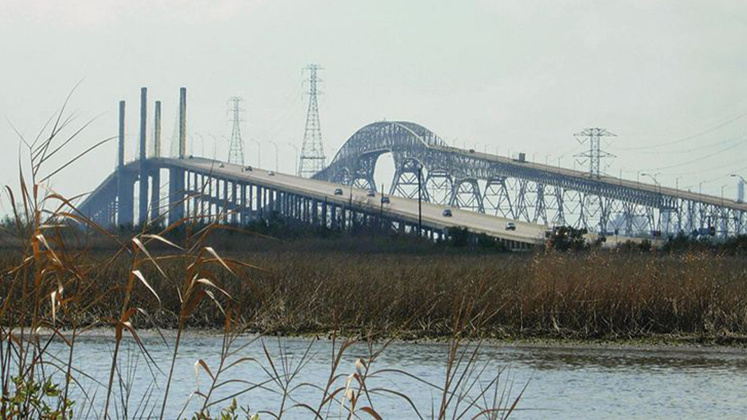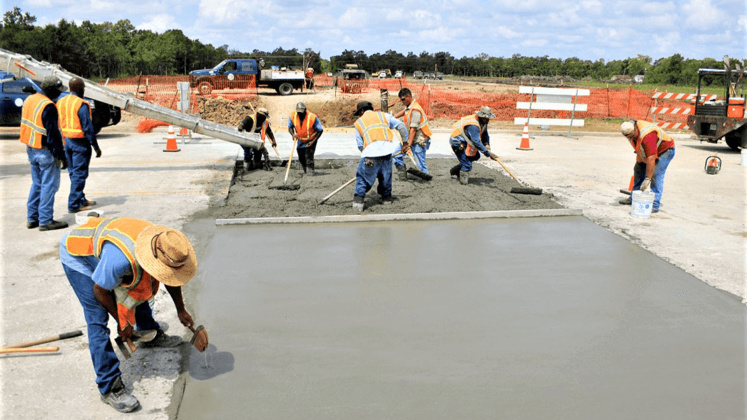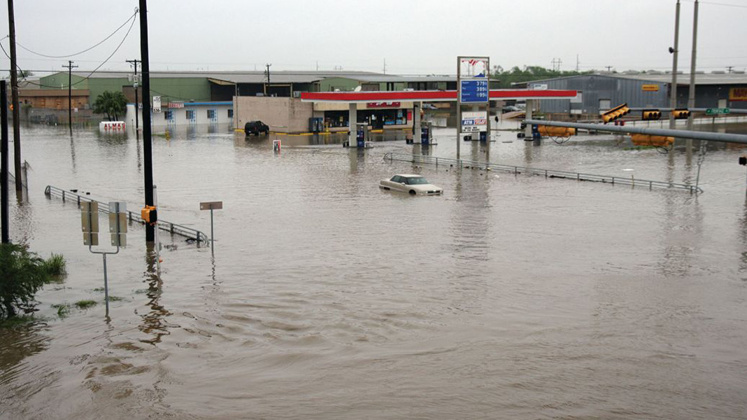Several local projects will receive part of the nearly $3 billion in climate-resilience funding as part of the Investing in America agenda. The selections, through two competitive grant programs, are touted to “help communities across the nation enhance resilience to climate change and extreme weather events.”
The selections include $1.8 billion for critical resilience projects funded by the Building Resilient Infrastructure and Communities (BRIC) national competition and $642 million for Flood Mitigation Assistance (FMA) community-scale flood mitigation projects.
These selections build on $160 million in BRIC and FMA selections that FEMA announced in May for efforts to support mitigation projects, project scoping, and adoption of hazard-resistant building codes.
Jefferson County
The Jefferson County Mitigation Construction and Channel Improvements Project received $50 million to address flooding in Jefferson County. Repetitive flooding along Interstate 10 near Beaumont has caused the flooding of thousands of structures, including 175 repetitive and severe repetitive loss properties, including the Good Year manufacturing plant which has suffered nearly $100 million in damage since 2017. The interstate is often impassable, which cuts off access to critical community lifelines such as emergency resources, evacuation routes, emergency facilities and shelters.
The Jefferson County Drainage District will mitigate this damage by building detention and diversion facilities and improve channels. The district will excavate a 3,800-linear foot diversion channel, a 370-acre detention facility west of Kidd Gully, and a 225-acre detention facility to the east of Kidd Gully. It will also make about 28,770 linear feet of channel improvements along Kidd Gully and about 10,625 linear feet of channel improvements along Bayou Din.
The Jefferson County Home Elevation Project will protect and reduce flooding to 37 properties with National Flood Insurance Program paid claims, was awarded $6.42 million.
In response to outreach by Jefferson County, more than 400 homeowners expressed interest in raising their homes above the base flood elevation (BFE) or the flood of record. This project will elevate 37 properties, 34 of which have experienced severe repetitive and repetitive loss claims.
The insured properties have experienced multiple flooding events, however, did not have insurance at the time of loss. Of the 37 properties, 17 are in census tracts with Centers for Disease Control and Prevention’s Social Vulnerability Index scores over 0.50.
If the homes are not elevated, they will continue to flood and flood claims will continue to rise. The county will require that homes be either three feet above the BFE or one foot above the high-water mark, whichever is higher. This will better protect homes and reduce National Flood Insurance Program (NFIP) claims.
Another project is the Borley Heights Relief Community Flood Mitigation Project for $3.43 million, a Justice40 project. Heavy rainfall causes large water flows due to poor drainage systems and overflow from the Pine Island Bayou, which backs up ditches which then flood the local area.
The Borley Heights Relief is a drainage project that will address shallow and moderate home flooding that has and will reoccur if not addressed. The Borley Heights Addition drains into a tributary of Griffing Ditch through a single box culvert under the Lower Neches Valley Authority (LNVA) Beaumont Irrigation Canal. Additionally, the drainage paths from the city streets to the box culverts are much too narrow and unmaintainable to successfully convey the flows at low enough elevations without home flooding.
A second cause of flooding on the addition is back up flood water from Pine Island Bayou. Griffing Ditch is a tributary of Pine Island Bayou, which has a much larger watershed (450,000 acres) compared to Borley Heights (182 acres). When heavy and widespread rainfall occurs such as during Hurricane Harvey, inundated the entire Pine Island Bayou Watershed with more than 40 inches of rain, the Pine Island Bayou will back up Griffing Ditch and into Borley Heights.
Hardin County
In Hardin County, the feds awarded more than $3.7 million to work on two projects for the city of Silsbee.
The Hendricks Drainage Channel Stormwater Improvements Project, which tackles stormwater with new flood mitigation improvements, will receive $3.08 million. The city will mitigate damage caused by flooding during storm events by increasing the outfall at the Hendricks drainage channel. The area includes 26 NFIP policies and 15 repetitive loss and severe repetitive loss claims.
The city will apply concrete lining to the channel that directs run-off from the nearby neighborhood to the outfall to control the flow of stormwater.
This will make nearby roadways less likely to flood and improve drainage during major flood events. Construction will consist of removing the existing concrete lining, installing 84 linear feet of 8-foot by 4-foot concrete box culverts, installing 40 linear feet of 5-foot by 4-foot concrete box culverts, paving repairs, and placing cement-stabilized sand.
The Flood Risk Reduction Project for Timberlane Drainage received a $641,857 allocation, so the city can construct flood mitigations structures to improve drainage during severe flood events.
Residents near the Timberlane Drive outfall suffer repetitive losses from flooding because existing infrastructure cannot properly drain water away from structures and streets. There are 12 community members who participate in the NFID and there have been two repetitive and severe repetitive loss claims.
The city proposes to mitigate damage from future storms by increasing the size of the outfall at Timberlane and lining the channel that directs runoff from the neighborhood to the outfall with concrete. This will control the flow of stormwater and decrease the likelihood and time that the nearby roadways may be under water.
Orange County
For Orange County, the Climate Resilient Elevation project will get $1.01 million as the county plans to raise five structures with 11 severe repetitive and repetitive loss flood claims across the structures. This project aims to eliminate damage to these homes during future storm events by raising each structure to at least two feet above the BFE or flood of record.
The project will take measures to prevent floodwaters from entering or building up within electrical lines and utilities and the city will obtain deed amendments to make sure that flood insurance coverage is maintained for the lifetime of each property.
Also, the city of Bridge City will receive $943,745 to raise six residential structures that have had eight severe repetitive and repetitive loss paid claims across the structures. The project will raise these structures to at least two feet above the BFE or flood of record to protect them from storm events while also taking measures to prevent floodwaters from entering or building up within electrical lines and other utilities. The city will obtain deed amendments to make sure that flood insurance coverage is maintained for the life of each property.




